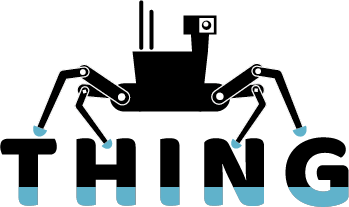Public (lay-person) video summarizing events and outcomes of the project.
Promotional media material for industry, summarizing related project outputs
Sewerage systems inspection — Zuerich, 16th October 2018
On this warm autumn day a team of researchers is performing tests underground. Their aim is to determine whether ANYmal – a robot jointly developed by Robotic Systems Lab and ANYbotics, an ETH spin-off – could one day be deployed in sewerage systems. It might be used, for instance, to help the City of Zurich employees who regularly have to walk or crawl through the some 100 kilometres of accessible shafts and drains underneath the city and whose job it is to check the walls and floors for damage. This work not only poses a health risk, but is also potentially lethal, given that the drains can fill up with water very quickly without warning. Another advantage of robots in such an environment is that they could operate in narrow sewers that cannot be accessed with the technology in use today.
The goal of the three-year research project entitled THING (sub-Terranean Haptic InvestiGator) is to design robots that can move about on their own and are better able to identify their surroundings. Robots generally use 3D cameras and laser sensors for orientation. But such devices can malfunction in adverse conditions – such as when the ground surface is wet or the air full of dust. That’s why the researchers consider enhanced haptic perception – orientation by touch – to be a possible solution. The project has brought together ETH researchers with colleagues from universities in Edinburgh, Pisa, Oxford and Poznań.
